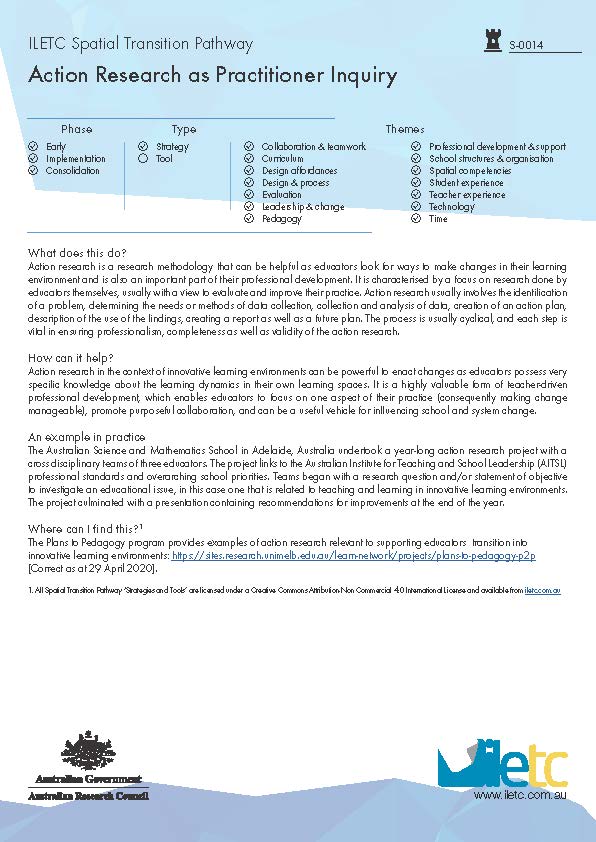| Introduction | Wayfinding activity | Spatial typologies | Spatial transition case studies | Spatial transition resources |
Spatial Transition Pathway
The Spatial Transition Pathway provides a framework for the strategies and tools which support teachers to make the journey of change into innovative learning environments. Strategy is defined as an explicit concept, theory or practice that enhances teachers’ use of innovative learning environments. A tool is an identifiable activity or protocol, that implements a strategy. You can use the database to search for strategies and tools by temporal phase or transition theme(s). If you would like to contribute a strategy or tool, please contact the ILETC team.
Action Research as Practitioner Inquiry
Action research is a research methodology that can be helpful as educators look for ways to make changes in their learning environment and is also an important part of their professional development. It is characterised by a focus on research done by educators themselves, usually with a view to evaluate and improve their practice. Action research usually involves the identification of a problem, determining the needs or methods of data collection, collection and analysis of data, creation of an action plan, description of the use of the findings, creating a report as well as a future plan. The process is usually cyclical, and each step is vital in ensuring professionalism, completeness as well as validity of the action research.

